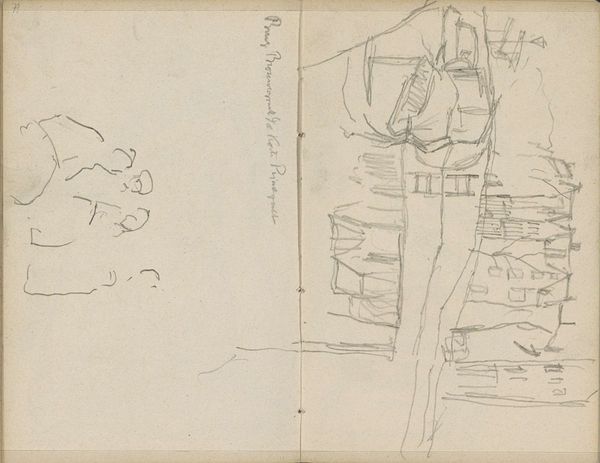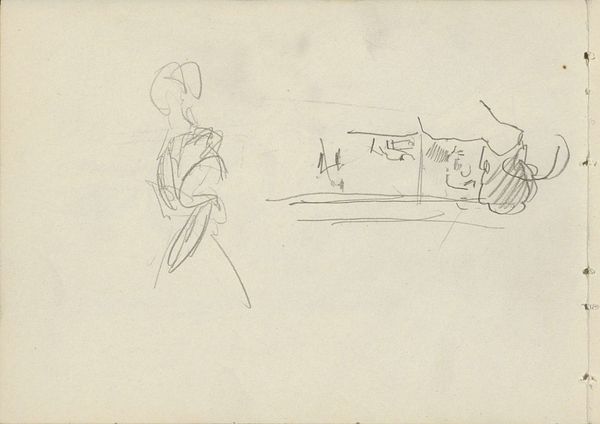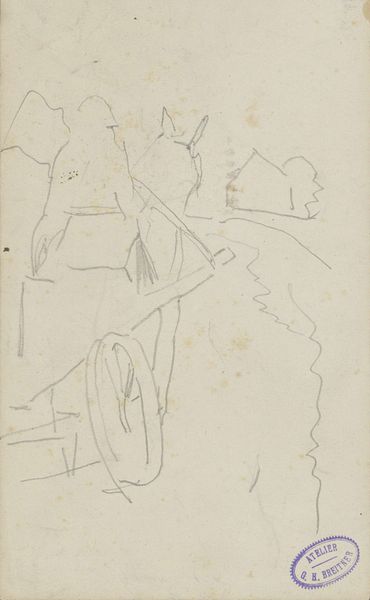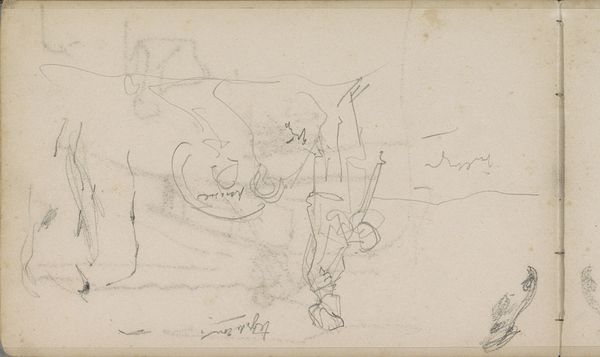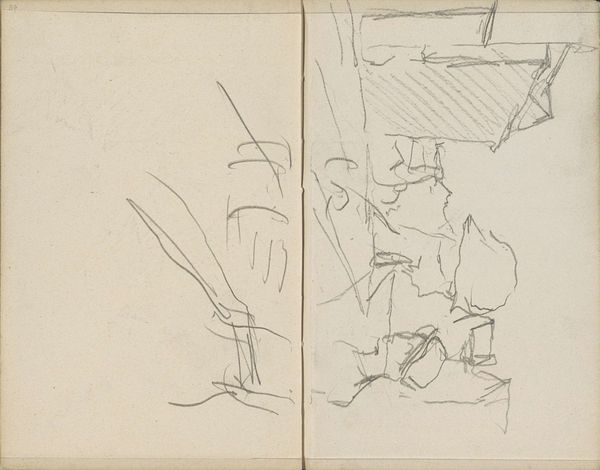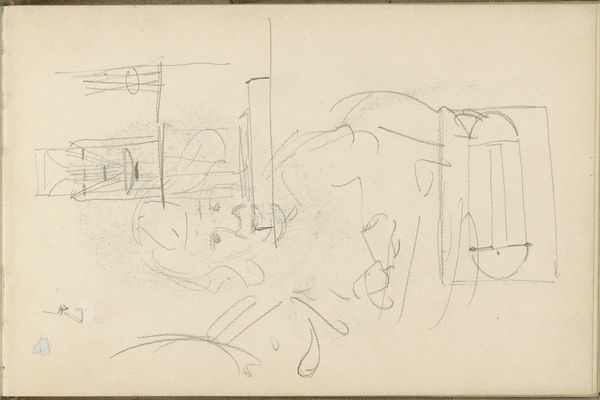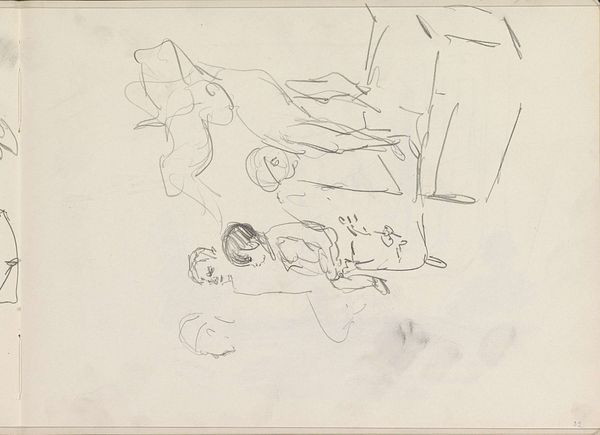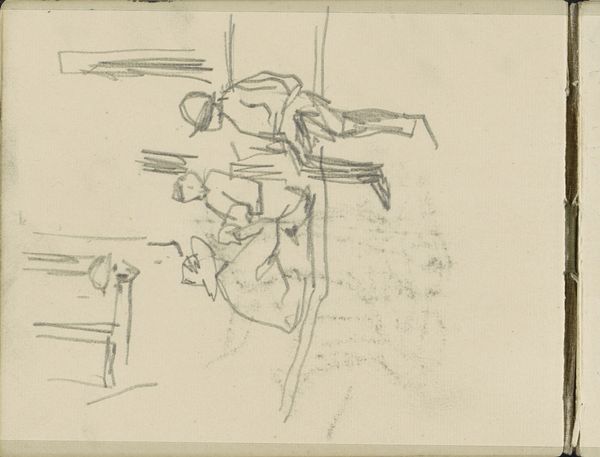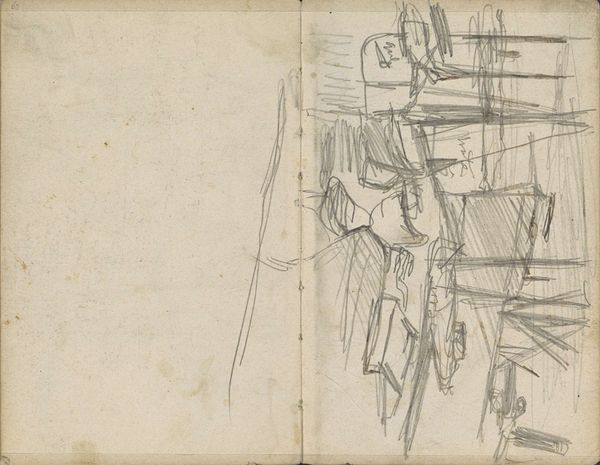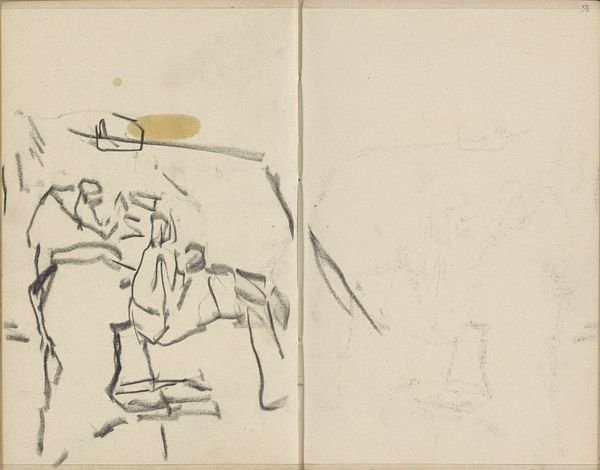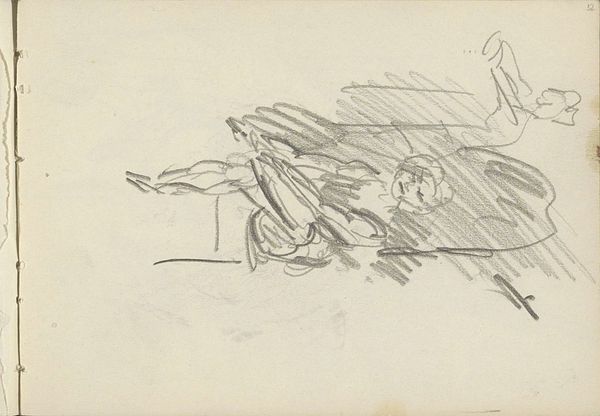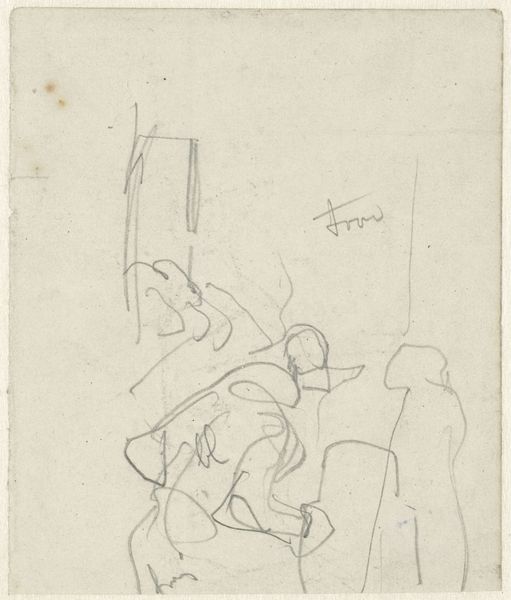
Copyright: Rijks Museum: Open Domain
Curator: Breitner’s quick pencil sketch, dating from around 1892 to 1923, depicts "Two Women and a Child in a Tram." It is currently held at the Rijksmuseum. Editor: It feels like a fleeting moment captured, almost voyeuristic. The figures are lightly drawn, giving a sense of transience and urban hustle. Curator: Indeed, Breitner was very interested in representing modern life. He found particular inspiration in Amsterdam’s burgeoning street culture. Consider the historical context: this era saw massive urbanization and shifts in societal structures. Breitner was part of the artistic movements documenting the democratizing effects of transportation on daily routines and cross-class interaction. Editor: That context definitely enhances my viewing of the drawing! Look at the mother and child. Their inclusion suggests the tram was becoming accessible to everyday people, not just the wealthy. Is there any cultural significance that this image communicates with these people being together? Curator: I think it reveals how modern forms of transport began blurring the lines between private and public, especially for women. Public transport offered a kind of social theater where observing and being observed became part of daily existence. The image might convey an increased visibility of mothers and families participating in public life and how mobility helped create opportunities. Editor: The simplicity of the lines communicates so much, creating almost archetypal figures instead of concrete portraits. It’s interesting how such light touches suggest this powerful narrative. Did his other works involve a similar approach in depicting people from the lower class, maybe? Curator: He used similar drawing styles in many of his paintings and photographs, especially when capturing life in motion. However, he’s most celebrated for depicting the daily lives of Amsterdam women. They were his main muses and that also gained him notoriety, due to the fact the role they play in society was a point of contention. Editor: Looking at the work from this angle, I understand more its relevance, that it's not just another pretty illustration. Breitner manages to freeze an otherwise transient tableau into something deeply poignant about social identity and public behavior. Curator: Agreed, it goes beyond aesthetics. By choosing the modern tram as the stage and his unassuming figures as the cast, Breitner gave voice to significant urban realities and opened the door to crucial public discourse about women's place in it.
Comments
No comments
Be the first to comment and join the conversation on the ultimate creative platform.
